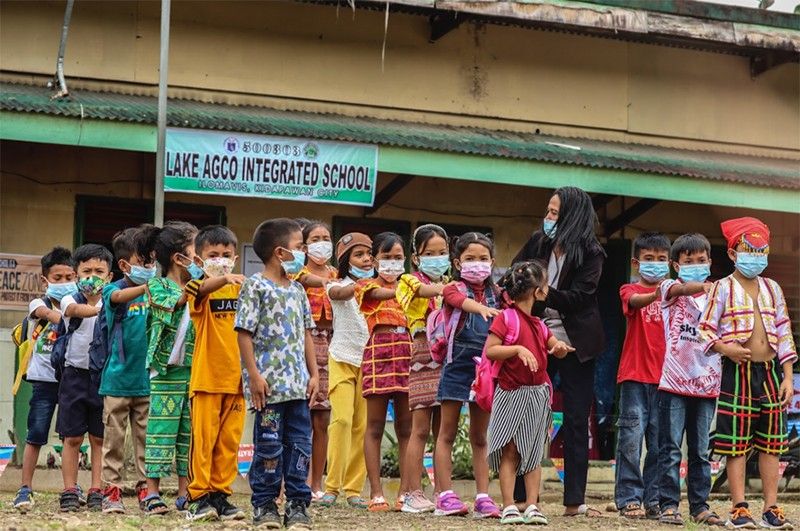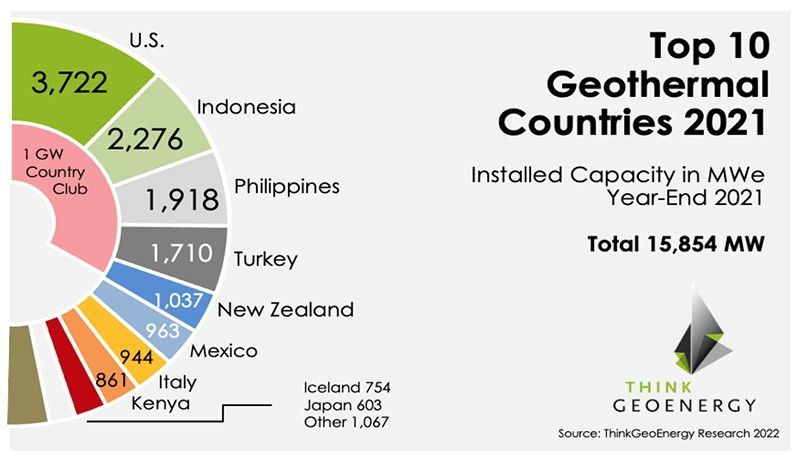Earth power: Geothermal energy and climate change

“Climate change is the single greatest threat to a sustainable future but, at the same time addressing the climate challenge presents a golden opportunity to promote prosperity, security, and a brighter future for all.” These poignant and impactful words by former UN Secretary-General Ban-Ki Moon are perhaps the most apt when it comes to describing “Geo Talks” - our special episode on Pamilya Talk about geothermal energy. I had the privilege of interviewing Carlo Lorenzo Vega, Vice President for Power Marketing, Trading and Economics of First Gen Corporation, and Jeff Caranto, AVP and Head of Exploration of the Energy Development Corporation (EDC), who shed light on the future of geothermal energy in our country and how it can help fight climate change, while also helping consumers lower their electric bills.
Right at the start, Jeff already brought up a very good point about how tropical nations like ours are the first to feel the effects of the climate crisis, and this is most underscored by the number and intensity of typhoons we experience each year.
“Ayon sa pag-aaral, isa ang Pilipinas sa mga bansa sa buong mundo na pinaka-vulnerable sa climate change … marami tayong nararanasang malalakas na bagyo ngayon … parami nang parami at lumalakas pa,” Jeff shared.
But Jeff -- who’s also the President of the National Geothermal Association of the Philippines (NGAP) -- was also quick to point out that with everyone’s help, the climate crisis can still be turned around. One effective way is by using renewable energy (RE), specifically geothermal energy which, he said, is the best RE in the country. Interestingly enough, according to studies, the energy industry's value added with economic development drives coal usage, and vice versa. Geothermal energy and coal have a counterintuitive positive and negative impact on carbon pollution, in the long and short term respectively. These findings are related to the nature of the Philippines' electricity supply, which is predominantly dominated by fossil fuels, and highlight the need to expand the use of geothermal energy. To fulfill the brisk demand for electricity from factories, it is critical to provide the conditions for scale effects and efficiency advances in the geothermal industry.
After the United States of America and Indonesia, the Philippines is the third largest generator of geothermal electricity. Geothermal exploration began in 1962, and the first significant commercial power units came online in two locations in 1979. By 1984, four geothermal fields had a combined installed capacity of 890 MW, supplying approximately 20% of the country's electric demands. The oil crisis and quickly expanding power demand, government support, available foreign money, and a combination of corporate and government investment and technical competence all aided geothermal energy development in the mid-1970s.
Since renewable energy has been seen to be a great solution to the climate crisis, we’re sitting on a veritable goldmine of 24/7 geothermal energy because of the country’s strategic location in the ring of fire. Dormant volcanoes are the primary source of geothermal energy, and unlike Mt. Pinatubo or Taal volcano, the dormancy of volcanoes is integral to the development and harnessing of this power to good and positive means. Jeff mentioned how the geothermal plants of EDC supply the entirety of Negros, Panay, and parts of Cebu – with the oldest plant in Leyte producing adequate geothermal energy for the past forty years and it doesn’t look like there are any signs of it slowing down.
Carlo, on the other hand, further explained that increasing the supply of available energy through geothermal energy will tremendously lower consumers’ electric bills by the simple economic principle of supply and demand. Since the distribution utilities have a monopoly currently on energy generation and distribution, the common Juan is at the mercy of the prices set by the distributors because of the costs incurred to generate, store, and distribute energy.
This is echoed in the energy crisis the world is feeling due to the Russia-Ukraine conflict that has imposed daunting sanctions on the oil-producing Northern Bear and even has carefree American motorists looking into carpooling and bicycling to cut costs at the pump.
Knowing the extent of Philippine-Ukrainian relations and weighing the power that Russia can exert over the Philippine economy, we must look to alternatives to ensure the continuous and relatively conflict-free state of Philippine energy production and distribution. The Philippines’ outlook for the global energy crisis, even though we may be feeling the painful effects of a full tank of gas now, is overall an optimistic one. Secretary of Trade and Industry (DTI) Ramon Lopez is optimistic that the country will be able to weather the present oil price issue as the administration implements policies and programs to offset the impact of the Russia-Ukraine war. Lopez stated that the Philippines was able to withstand post-World War II disasters such as the 1973, 1997, 2005, and 2008 oil crises, the Asian crisis in 1997, and the global financial crisis in 2008. "We've been through catastrophes, and the Philippines has always been resilient." "We just keep moving forward while we try to mitigate the impact," he remarked at a recent Kapihan sa Manila Bay.

However, there may be more to the rosy outlook mentioned by Mr. Lopez through the GEOP – or the Green Energy Option Program which Carlo discussed in our interview. GEOP is one of several initiatives established by the Renewable Energy Act of 2008 to stimulate the growth of renewable energy in the country. The program allows consumers to get their electricity from renewable energy sources such as biomass, solar, wind, geothermal, ocean energy, and hydropower.
Electricity consumers are no longer limited to obtaining their supply from the distribution company closest to them. Eligible consumers can now select from a variety of "Renewable Energy Suppliers" authorized by the DOE to obtain energy from renewable energy installations. EDC is just one of these suppliers. GEOP intends to contribute to energy sustainability and further competition in the electrical market through such a system.
“It allows some end users to be able to choose where to buy energy from. Ang sinasabi ng GEOP, puwede kang lumipat outside of your distribution utility pero dapat renewable energy ang bibilhin mo… So yung GEOP is specifically asking end users to switch to renewable energy. May stages, may requirements, pero ang importante, may choice na, puwede ka nang pumili,“ Carlo explained.
But Carlo and Jeff both admit that the lack of awareness about renewable energy sources like geothermal energy is one of the challenges why even qualified consumers are unable to make the shift. Government also needs to be more consistent and dynamic in crafting and implementing laws on RE to make these energy sources even more accessible to the public.
Carlo and Jeff are one in enjoining the public to be geothermal advocates. “When it comes to the fight against climate change, all of us would have to say na walang isang solusyon. There’s no silver bullet. But definitely using renewable energy sources, especially geothermal, is a good way o mabisang panlaban sa climate change… Hinihikayat ko ang lahat na sama-sama tayong tumawid ng finish line to a cleaner and greener future,” Carlo said.
“Kung EDC lang ang nagpu-push ng efforts or what we’re doing in terms of energy sources para pabagalin yung climate change, kung kami lang ang nasa dulo, we would have failed kung karamihan sa kasama namin ay hindi naman sumama doon. We encourage everyone to join us in this advocacy, hindi lang yung geothermal kundi the entire renewable energy industry,” Jeff imparted.
Let’s all make a difference in how we conserve energy, conserve money, and conserve the planet. No effort is too small, especially if we remember that we have not necessarily inherited the Earth from our parents – we are merely borrowing it from our children.
--
Watch Pamilya Talk on Facebook, YouTube, and Kumu (@JingCastaneda – 12:00 noon – 1:00 p.m. Monday & Wednesday). You can also follow my social media accounts: Instagram, Facebook, YouTube, Tiktok, Twitter and Kumu. Please share your stories or suggest topics at [email protected]
- Latest





























